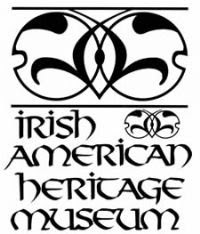 The Historic Districts Council (HDC) presented its annual Grassroots Preservation Awards to seven organizations and individuals on May 12th in the garden of Plymouth Church of the Pilgrims in the Brooklyn Heights Historic District. This year, HDC is celebrating its 40th year of advocating for New York City’s historic neighborhoods.
The Historic Districts Council (HDC) presented its annual Grassroots Preservation Awards to seven organizations and individuals on May 12th in the garden of Plymouth Church of the Pilgrims in the Brooklyn Heights Historic District. This year, HDC is celebrating its 40th year of advocating for New York City’s historic neighborhoods.
“These advocates are the foundation of the preservation movement and their efforts benefit everyone who lives, works or visits New York City,” said Simeon Bankoff, executive director of HDC. “It’s an honor to be able to shine the spotlight on these neighborhood leaders.”
2011 Grassroots Awardees
Cedar Grove Beach Club
Established on the North Shore of Staten Island in 1911, Cedar Grove Beach Club is the last beach bungalow colony on the island. In 1962, the club land was taken by eminent domain but residents were allowed to remain and continued to restore the buildings and keep the beach clean and accessible. However in 2009, the NYC Department of Parks and Recreation declared that they were evicting the residents in order to demolish the majority of the bungalows. The Beach Club rallied to stop this action but was unsuccessful. Their campaign, however, raised awareness about this special piece of New York City’s cultural history.
Central Queens Historical Society
In 1988, Jeffrey Gottlieb established the Central Queens Historical Association to advocate for preservation of the borough’s significant areas, including Kew Gardens, Jamaica, and Richmond Hill. Through his ongoing advocacy campaign for downtown Jamaica, the LPC moved forward on the designation of several historic structures including the Jamaica Chamber of Commerce Building, Queens General Court House, two Jamaica Savings Bank buildings, and Jamaica High School.
Mary Kay Gallagher
Mary Kay Gallagher has been a leading figure in Brooklyn’s Victorian Flatbush area for more than four decades. She founded Mary Kay Gallagher Real Estate in 1970, in part to help find sympathetic buyers for the wealth of large, free-standing Victorian-era homes that dominate Brooklyn neighborhoods such as Prospect Park South, Ditmas Park, Fiske Terrace, Midwood Park, Beverly Square West and Caton Park.
Prospect Cemetery Association
Cate Ludlam has been the driving force behind Prospect Cemetery Association, a group dedicated to preserving and restoring Prospect Cemetery in Jamaica, Queens. The site is the oldest burial ground in Jamaica, with burials dating back to the mid-17th century. Ludlam has led the group through an intensive effort to reclaim the largely abandoned cemetery and recently completed a restoration of the adjacent Chapel of the Sisters.
Friend in High Places
State Senator Bill Perkins, 30th District, Manhattan
Senator Perkins currently serves as State Senator from Manhattan’s 30th District. Both in his role as New York State Senator for the past five years and previously during eight years as a city councilmember, he helped champion numerous preservation causes. Recently he has been a strong supporter for the designation of the West End Avenue Historic District and a Morningside Heights Historic District, and the successful designation of West-Park Presbyterian Church. Among the other preservation campaigns Senator Perkins has been involved with include holding public education programs on tax incentives for historic properties and leading the effort for more comprehensive legislation to improve oversight of the landmarks process.
Friend from the Media
The Architect’s Newspaper
Since its founding in 2003, The Architect’s Newspaper has featured broad coverage of preservation and development–related issues from across the city. Looking beyond concerns of architectural design, the paper has covered important neighborhood preservation issues such the proposed redevelopment of St. Vincent’s Hospital, the tower proposal at 980 Madison Avenue and the future of Coney Island in depth. Although it is targeted towards a self-identified audience of architects and design professionals, AN’s coverage is both balanced and accessible, with a deep understanding of the arcana of New York City’s development world.
Mickey Murphy Award for Lifetime Achievement
Bronson Binger and Ann Walker Gaffney
Bronson and Ann have been tireless preservation advocates for decades. Bronson served New York City as Assistant Commissioner of Capital Projects for both the Parks Department and the Department of General Services. As Vice President of the Municipal Art Society, he saw the need to form a committee to protect the city’s historic neighborhoods, which later became the Historic Districts Council. He was closely involved in several successful campaigns, including the creation of the Carnegie Hill, Upper East Side, and Sailors’ Snug Harbor Historic Districts. Trained as a Graphic Designer, Ann has contributed her art of logos, brochures and invitations for many not-for-profit organizations. She served on the Historic Districts Council’s board of directors for almost 20 years as well as serving on the Board of The Fine Arts Federation and as a governor of the Brooklyn Heights Association for many years.







